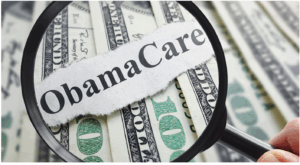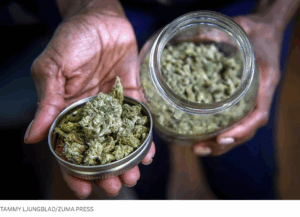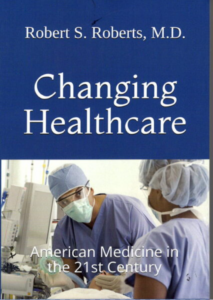
It’s now Day 22 of the Schumer Government Shutdown. I wrote about this recently when it was only Day 10. To learn why this shutdown is entirely due to Senate Minority Leader of the Democrats, Chuck Schumer, see that post called Schumer’s Government Shutdown.
In typical Democratic fashion, they are using scare tactics to frighten the American people. The latest example of this fearmongering is to warn that ObamaCare premiums will double if Republicans don’t cave to their demands.
It is true that ObamaCare subsidies that were increased by the Biden administration during the Covid pandemic are set to expire at the end of this year. The Covid emergency is over and extending these subsidies only adds billions to the already catastrophic deficit. What’s more, many of those who are receiving these subsidies are fraudulently claiming lower income levels than the truth but the Biden administration didn’t care. They literally let millions get away with fraud costing the taxpayers billions.
Therefore, when these temporarily increased subsidies expire it is likely that ObamaCare premiums will go up. But the real question is how much and who will be affected?
Chris Jacobs, founder and CEO of Juniper Research Group, tells The Wall Street Journal that Democrats are falsely claiming premiums will double. The basis for this misinformation is a study by the Kaiser Family Foundation, better known as KFF.
Jacobs explains: “On Aug. 6, KFF published an analysis showing “a median proposed premium increase of 18%” for insurers’ exchange plans. But on Sept. 30, several of the same researchers issued a second report with a headline asserting that “premium payments would more than double” if enhanced subsidies expire. What happened? Did premium estimates for 2026 rise sixfold in one month? No. KFF’s second study was misleading. It used cleverly parsed terms—“premium payments” rather than “premiums”—to conflate total premiums with enrollees’ out-of-pocket payments. The two aren’t the same. Focusing on the latter to the exclusion of the former, as the September study did, omits important context.”
Even more surprising is that KFF admits the error. Cynthia Cox, a KFF vice president, confessed to Jacobs that the claim was inaccurate and said, “We do plan to update the graphic to be more precise.” But they didn’t advertise the mistake and edited the graphic without publicly disclosing its error.
KFF’s own work demonstrates that the federal government will still pay the vast majority of most enrollees’ premiums if the enhanced subsidies, first enacted under the Biden administration in 2021, end. Its analysis last July found that in 2024 the enhanced subsidies paid an average of 88% of enrollees’ overall premiums. Without them, the federal government would have paid an average of 78% of enrollees’ premiums last year. KFF hasn’t published a more recent analysis, but other groups have confirmed that federal dollars will continue to pay the lion’s share of most enrollees’ premiums if the enhanced subsidies expire.
Most exchange enrollees will face moderate increases in out-of-pocket costs in dollar terms. KFF estimated that the average enrollee will pay $1,016 more per year, or $84.67 more per month. A separate study from the Urban Institute concluded that households with incomes below 250% of the poverty level—who receive the richest subsidies, and comprise roughly three-quarters of all exchange enrollees—will pay an average of $750 more a year, or $62.50 monthly.
Some will face more-substantial costs if the enhanced subsidies expire. Whereas ObamaCare limited subsidy eligibility to households with incomes below four times the poverty level, the enhanced subsidies eliminated that cap. If the enhanced subsidies expire, the cap would return, and households with incomes just above it could face thousands of dollars in heightened costs. But even here, KFF data show that such households represent a mere 7% of enrollees. The Urban Institute estimated that the uninsured rate among this cohort would rise only modestly, because they “are more likely to pick up coverage from an employer” and “are more willing to pay the full premium.”
Jacobs concludes, “The left’s apocalyptic rhetoric about the expiration of the enhanced subsidies belies that federal taxpayers will still subsidize three-quarters of enrollees’ premium costs.”
The real solution to this problem is radical surgery on ObamaCare to fix the “root causes” of its rising costs. A good start would be eliminating the requirement that all plans must have the same “essential benefits” which means women must pay for premiums that include prostate exams and men must pay for coverage of mammograms. Even most politicians should recognize the absurdity of such insurance coverage.



